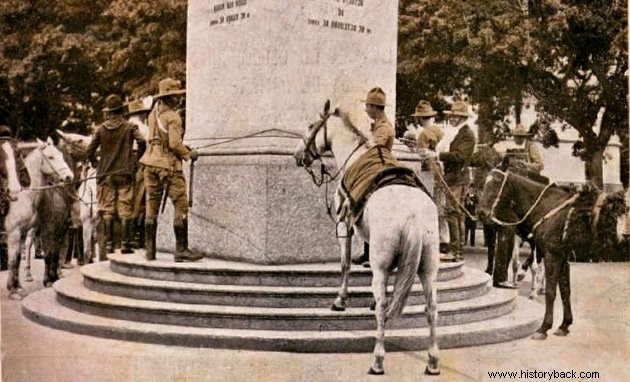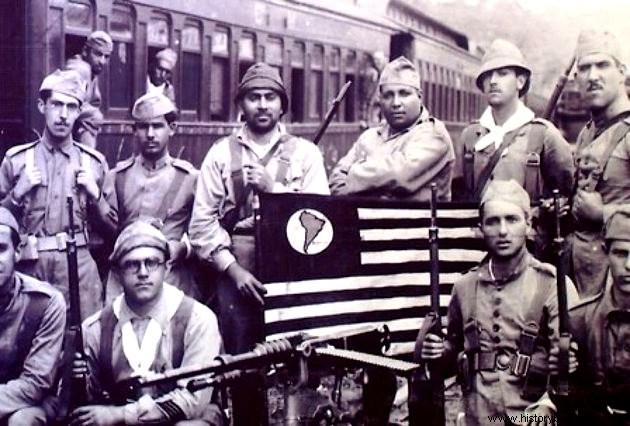It's called provisional government the period from 1930 to 1934, when Getúlio Vargas ruled Brazil, after the victory of the 1930 Revolution.
This moment was marked by the tension between the centralization of power around Vargas and the discontent of the former state oligarchies.
Revolution of 1930

The Revolution of 30 brought discontent with the government of the First Republic to the federal government, through the coup d'état proposed by Getúlio Vargas.
The first measures of the provisional government were:the closing of the Congress and the Senate, the suspension of the Constitution of 1891 and the removal of the former presidents of provinces (governors).
The Ministry of Education and Health, as well as the Ministry of Labour, Industry and Commerce were also created.
Vargas also promised presidential elections soon, but postponed the decision whenever he could. He turned to the Catholic Church for support and thus managed to sustain himself in the presidency.
Attitudes like these displeased several of his co-legionaries who participated in the 30's movement.
See also:Revolution of 1930The Provisional Government and the Lieutenants
Once victorious, Getúlio Vargas placed the lieutenants in the main positions of the administration for their participation in the Revolution of 30. The political maneuver displeased those colonels who maintained their strongholds of influence in the country and who began to confront the government.
The lieutenants came to control the states with the name of "intendents" after the deposition of the former state presidents (governors) elected.
Among the lieutenants were Juarez Távola, Juraci Magalhães, João Alberto and Ary Parreiras. However, there were civilians like Maurício de Lacerda and Pedro Ernesto.
Juarez Távora is called delegate of the Northern States (which included from Espírito Santo to Amazonas) and João Alberto, intervenor of São Paulo. For his part, Juracy Magalhães is chosen as intervenor of Bahia and Ary Parreiras, of Rio de Janeiro.
Pedro Ernesto is appointed intervenor of the Federal District and Maurício de Lacerda served as ambassador to Uruguay and shortly afterwards breaks with Vargas.
A year after the revolution, the provisional government adopted the Code of Interventors, which limited the power of appointed lieutenants. Furthermore, it prohibited them from taking out loans abroad and having police forces superior to the national army.
The military, united around the Clube 3 de Outubro, based in Rio de Janeiro, debated instruments to consolidate the Armed Forces. In this way, they support labor reform, stand against elections and the convening of a Constituent Assembly.
Oligarchic groups, however, demanded elections and constitutional reform. In this way, they began to challenge Getúlio Vargas in an attempt to avoid the political strengthening of the lieutenants.
See also:Tenentism1932 Revolution and Provisional Government

The discontent of the oligarchic groups, led by the Paulistas, marked the beginning of the 1932 Revolution in São Paulo.
The objectives of this uprising were to call for elections for executive positions and for the formation of a constituent assembly. Faced with the government's refusal, the Paulistas took up arms, but the revolt was put down by Getúlio Vargas.
In any case, a year later, the National Constituent Assembly was created, which would promulgate the new Magna Carta and elect Vargas himself as president.
Among the definitions of the new Constitution of 1934 was the election by direct and secret vote, a four-year presidential term and the creation of deputies by professional category.
With the new Magna Carta, the provisional government and the tenentist movement would come to an end and the Vargas Era enters the phase called Constitutionalist Government.
Also read about the Vargas Era:
- First Republic
- Era Vargas
- New Status
- Brazil Republic
- Exercises on the Vargas Era
